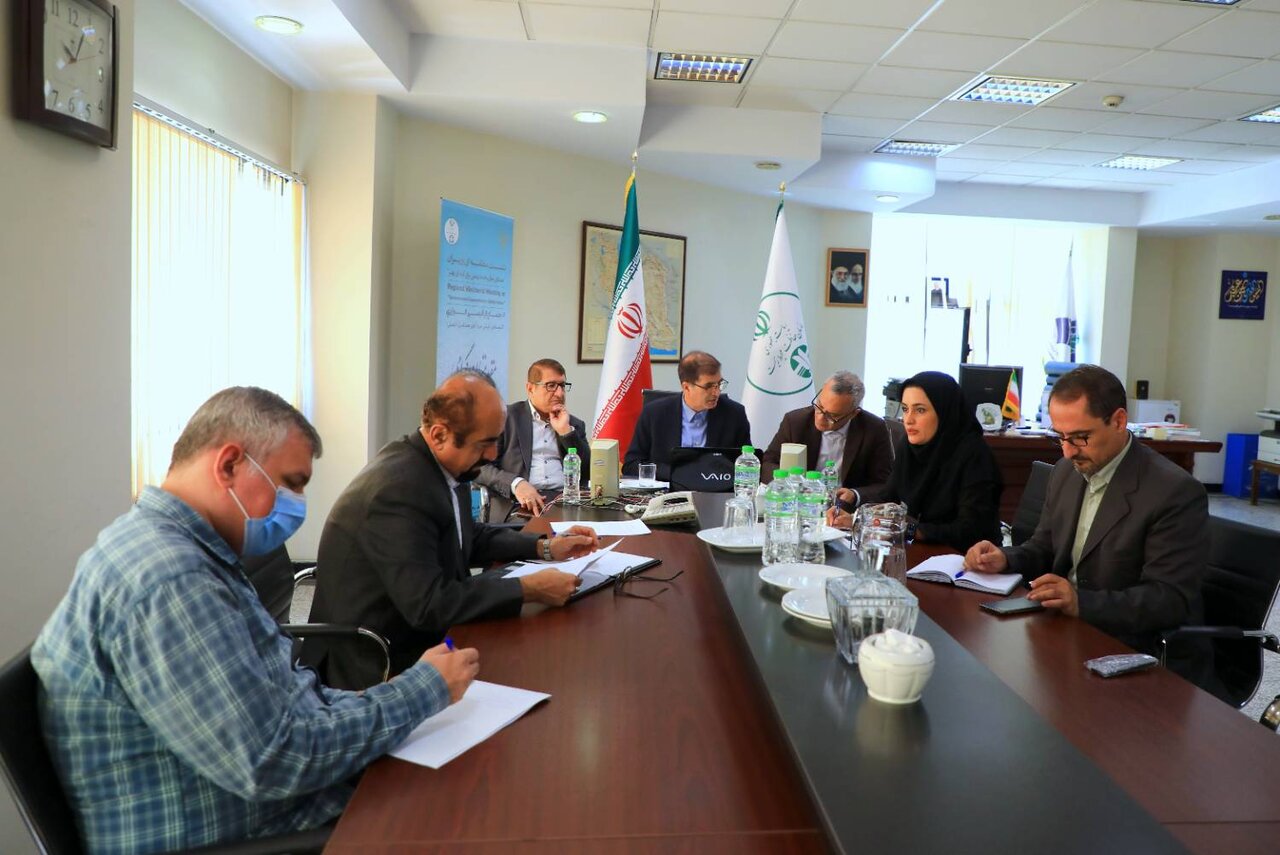Iran, Turkmenistan highlight cooperation to mitigate SDS impacts

TEHRAN- Tehran and Ashgabat have emphasized the need to cooperate on tackling sand and dust storms (SDS) originating from the Karakum Desert in Turkmenistan.
Iraj Heshmati, the deputy head of Iran's Department of Environment, and Charygeldi Babanyyazov, the Minister of Environment of Turkmenistan, held a meeting via video conferencing on Tuesday, August 15.
They discussed the impacts of climate change, particularly SDS, on the health of people, and their economic and social activities in the region, IRIB reported.
Studies show that the Karakum Desert, with an area of about 10 million hectares in Turkmenistan, is one of the sources of dust storms in the north and northeast of Iran, Heshmati pointed out.
He called for signing a memorandum of understanding to take joint measures to deal with the issue.
Babanyyazov, for his part, emphasized the importance of protecting the environment and biodiversity. Referring to some of the actions taken by his country, he said: "Environmental protection is a global issue, and environmental challenges should be resolved through joint efforts of all countries."
Vegetation expansion is one of the effective ways to combat sand and dust storms and desertification as well, the Turkmen official stressed.
"Unfortunately, climate change has reduced rainfalls, leading to the destruction of vegetation."
During the meeting, Heshmati invited Babanyyazov to take part in the international conference on combating sand and dust storms, which is scheduled to be held in Tehran on September 9-10.
According to studies, eight large sand and dust storm hotspots stretching to 270 million hectares in neighboring and Persian Gulf countries are affecting Iran.
Regional maps show that Saudi Arabia produces the highest level of particulate matter, followed by Iraq, Syria, Kuwait, and the UAE, respectively.
The internal dust sources are estimated at 34.6 million hectares, generating an average amount of 4.22 million tons of dust per year, about 1.460 million hectares are dried wetlands.
In August 2022, Department of Environment Chief Ali Salajeqeh said to deal with sand and dust storms, positive measures have been taken inside the country.
To deal with sand and dust storms, positive measures have been taken inside the country.
A ten-year plan has been prepared to curb internal sources of sand and dust storms.
“At least five international meetings will be held this year, one of which is the conference on combating sand and dust storms,” he added, IRNA reported.
In July 2022, Tehran played host to a conference of ministers and officials from 11 countries, aiming to boost cooperation for resolving extant environmental problems, especially sand and dust storms.
Environment ministers of Iraq, Armenia, the United Arab Emirates, Oman, Syria, and Qatar, as well as deputy ministers of Azerbaijan and Turkmenistan along with delegations from Turkey and Uzbekistan, participated in the event which was held with the theme of “Environmental Cooperation for a Better Future.”
Addressing the opening ceremony, President Ebrahim Raisi emphasized that the preservation of the environment is essential and an inevitable priority.
Letizia Rossano, the director of the Asian and Pacific Centre for the Development of Disaster Information Management (APDIM), said in June 2022 that Iran is really at the forefront of understanding the problem of sand and dust storms as well as dealing with it.
More than 80 percent of the entire populations of Turkmenistan, Pakistan, Uzbekistan, Tajikistan, and the Islamic Republic of Iran are exposed to medium and high levels of poor air quality due to sand and dust storms," she noted.
Joint project to manage SDS
In March, Salajeqeh met Turkmenistan’s Foreign Minister Rasit Meredov. They decided to launch a joint project to manage and control sand and dust storms originating from the Karakum Desert in Turkmenistan, IRIB reported.
The two officials met on the sidelines of an international conference titled "Partnership for Food Security under Climate Change" which was held in collaboration with the United Nations Food and Agriculture Organization (FAO) in Ashgabat on March 9-10.
Expert teams from both sides said to investigate the origin of the dust in northeast Iran that affects the two countries.
Dredging of the rivers leading to the Caspian Sea, as well as the issue of protecting border areas and implementing joint plans in the field of wildlife conservation, were other issues discussed by the two sides.
Addressing the international conference in Ashgabat, Salajeqeh called for boosting multilateral cooperation in the region to tackle environmental challenges and ensure food security.
“The impact of climate change has become so obvious and severe that we must react actively, effectively, efficiently, and quickly.”
Environmental problems are not limited to the political arena, he said, adding that supporting and strengthening regional and multilateral cooperation to overcome common challenges is of vital importance.
The SDS phenomenon has been plaguing the country for several years and has caused problems in many provinces. According to experts, natural and human factors are involved in the occurrence and severity of this phenomenon which is mainly caused by excessive consumption of water and drying up reservoirs.
MT/MG
Leave a Comment